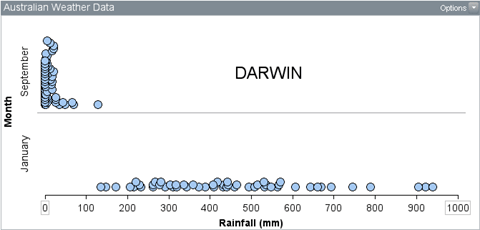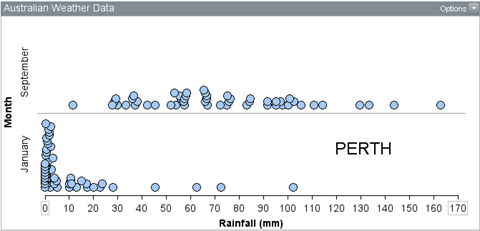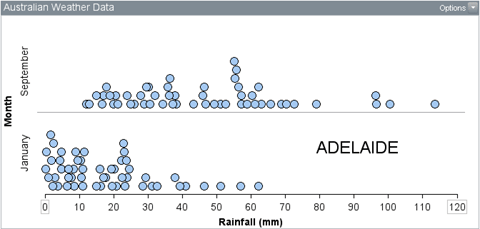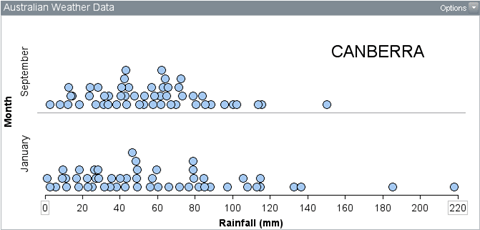Home > Statistics > Misunderstandings > Difficulties with informal inference > Is there a difference?
Is there a difference?
Students need to experience many examples to develop their intuitions about whether the differences between data sets are meaningful. It is important to discuss why this is so.
The following plots show four pairs of data sets. Each pair represents the monthly rainfall data for 56 years for the months of January and September for an Australian capital. Each is accompanied by an intuitive comment on the population difference in rainfall.
You can be very confident in claiming that there is a difference in the rainfall between September and January in Darwin.
You can also be very confident in claiming that generally there is more rain in September than in January in Perth.
Although there is considerable overlap, you can be quite confident in claiming that Adelaide has more rain in September than in January.
You cannot make any strong claims about the difference in rainfall for September and January in Canberra.
Some teaching advice on meaningful differences and an activity on differences in heights are provided.




